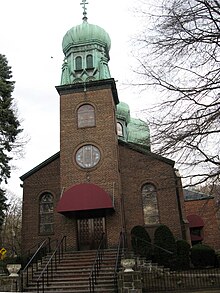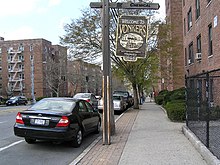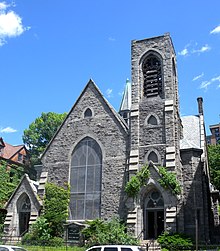Remote Patient Monitoring in Yonkers

Reducing Hospital Readmission Rates in Yonkers
Amelia Home Care addresses avoidable readmissions by blending live 24/7 Professional Remote Care Coordination (RCC) with the latest intuitive remote patient monitoring.
Our team provides timely interventions, bridges external care services, and addresses patient psychosocial needs. RCCs collect and share patient data with the healthcare team, a key pillar in preventing avoidable readmissions.
With thousands of patients, Amelia Home Care is seeing a reduction in readmission rates of 91 to 95 percent.
Remote Care Coordination in Yonkers
Our Remote Care Coordinators (RCCs) provide face-to-face, video chat interactions with your patients to monitor and assist in adherence and reducing readmissions while improving clinical patient outcomes.
With the ability to visually record patient vitals, assess patient needs for medication refills, food, transportation to medical appointments, and social interactions, our coordinators develop personalized patient care with established protocols.
Available 24/7, RCCs cover the extended hours and weekends when staffing from Home Health is typically limited. Amelia Home Care patients thrive with more attention and interaction, and their satisfaction scores prove it!
Care Pathways for Yonkers Clients
Amelia Home Care has over 95 Care Pathways currently available to our clients including combination pathways for patients with multiple co-morbidities.
These pathways include branch logic and RCC protocol for follow-up questions. Our RCCs are trained to identify and report issues with post-acute and post-surgical patients, including the identification of SIRS criteria, which may lead to sepsis.
In addition to pathways questions, vital signs, and video conferencing, we have educational videos, teach-back questions, reminders, and the ability to assist patients in obtaining appointments, video-conferencing with family members, and other members of the care team.

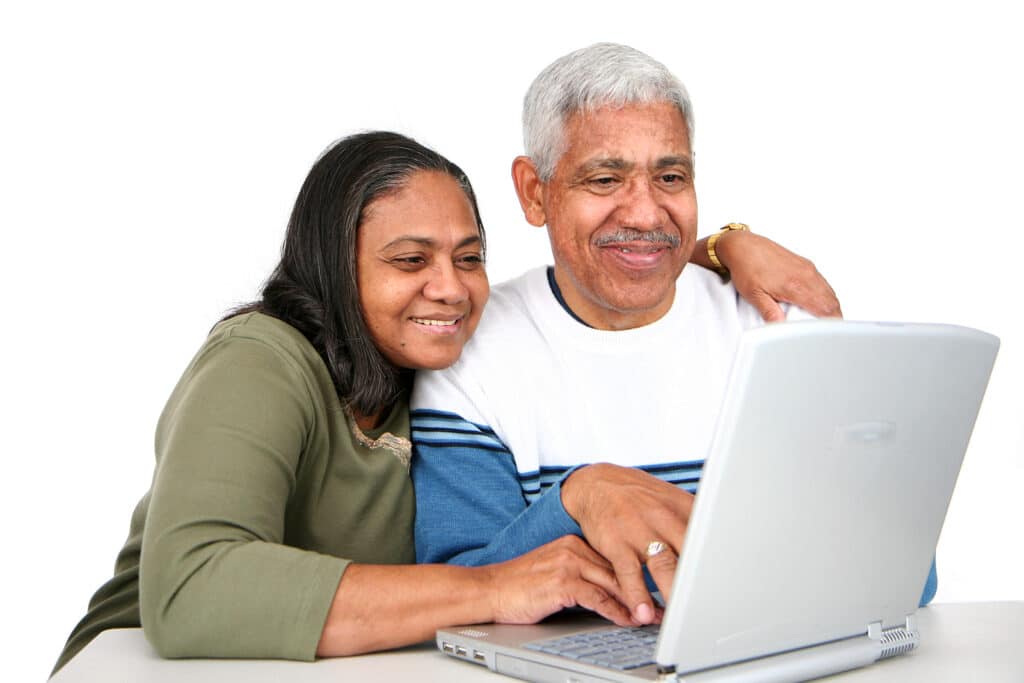
Psychosocial Needs and Socialization for Yonkers Residents
Often, many of our patients are seniors between 70 to 95 years old, and many are lonely and isolated. The RCC’s responsibility is to engage in casual conversations, beyond the illness and discuss life, and joyful matters.
For patients who require more attention, often receive multiple video calls per day and are assigned to volunteers to check in with the patients.
The results are astonishing, leading to reduction of readmissions, happier patient satisfaction, and increased RPM utilization rate.
Amelia Home Care Health Platform
Based on the patient’s capability and comfort level utilizing their preferred communication device, Amelia Home Care provides a variety of platforms to ensure as many patients are enrolled in the program as possible.
For patients accustomed to utilizing their own personal smartphone or tablet (Apple or Android), an easy-to-download application is provided.
A telehealth kit, which consists of a tablet with built-in internet and wireless medical devices and is intuitive to operate, can be delivered to the patient’s home.
If both are not viable options, their assigned RCC can render phone calls to retrieve ongoing data collection so no patient is left out of the program.
Authorized physicians, nurses, nursing staff, and Home Health agencies will have access to patient data and telehealth communication with the patient based on their security access privileges.
Oftentimes, physicians and nurses find it more convenient to work with the assigned RCC.
Based on schedule or ad hoc calls, the RCC can engage the physician on a group video conference with the patient by sending a link to the physician’s email or phone.
Upon clicking the link, the physician will be able to join the secured video conference call with the patient.
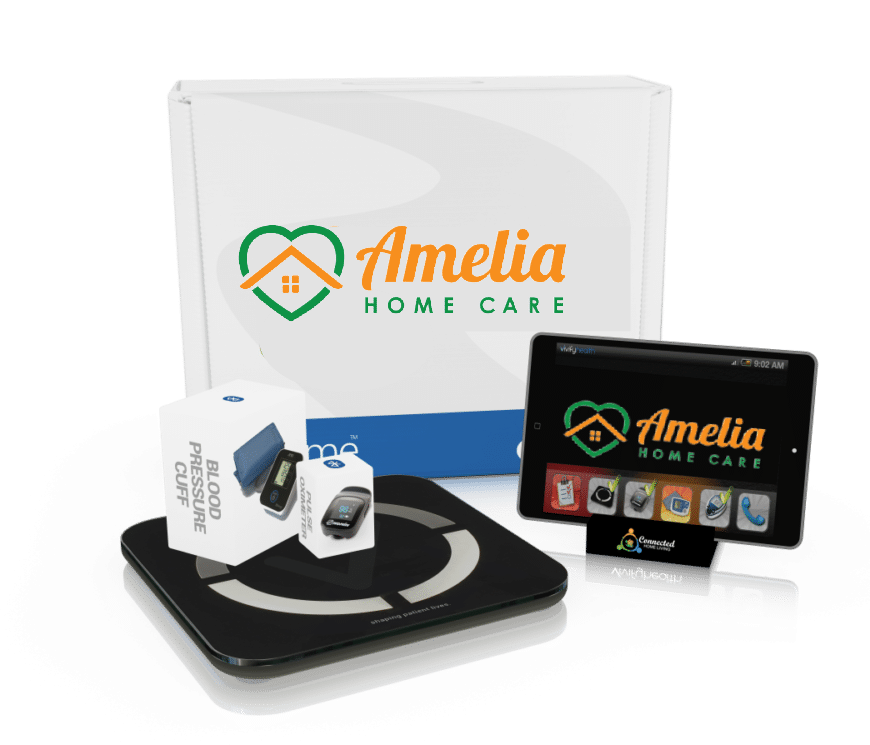

How We Help Hospitals and Health Systems in Yonkers
TURN-KEY communication center for efficient coordination of care – no implementation or set up fee.
FACILITATE safe return to home – enabling shorter hospital length of stay.
REDUCE unnecessary hospital readmissions.
ENABLE the efficient and streamlined monitoring of post-acute care.
MANAGE the volume of incoming data based upon clinically defined thresholds.
COLLECT clinically meaningful data to enhance and adjust care.
SUPPORT client/patient autonomy through education and communication.
ENHANCE resource management to ensure clinical visits are necessary, with documented justification.
DRIVE value-based care by increasing and enhancing ongoing interactions between patients and clinicians.
DEFINE the standard of care in the marketplace.
How We Help Physician Groups in Yonkers
TURN-KEY remote monitoring communication center for efficient coordination of care.
FACILITATES ease of access to patient data.
MANAGES the volume of incoming data based upon clinically defined thresholds.
COLLECT clinically meaningful data to enhance and adjust care.
SUPPORT the delivery of higher quality care to more patients.
REDUCE unnecessary hospital readmissions.
ENABLE the efficient and streamlined monitoring of post-acute care.
SUPPORT client/patient autonomy through education and communication.
ENHANCE resource management to ensure clinical visits are necessary, with documented justification.
POSITION practice for the value-based care market by increasing ongoing interactions between patients and clinicians.
DEFINE the standard of care in the marketplace.
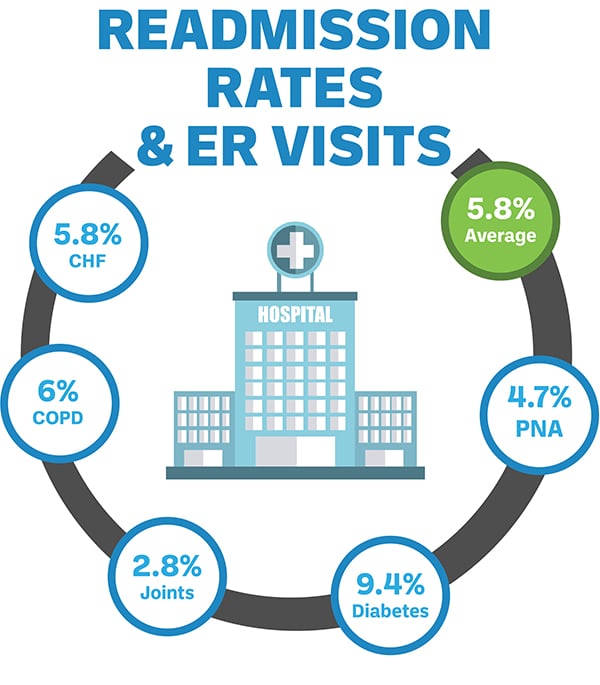

How We Help Accountable Care Organizations Who Serve Yonkers
- CHRONIC CARE management supporting a reduction in Medicare costs.
- IMPROVED communication channels between multiple providers and specialists.
- ENABLE enhanced care coordination throughout the medical care continuum.
- REDUCE unnecessary and redundant healthcare service.
- FACILITATE your ability to meet CMS standards for cost savings.
- COLLECT clinically meaningful data to enhance and adjust care.
- SUPPORT client/patient autonomy through education and communication.
- ENHANCE resource management to ensure clinical visits are necessary, with documented justification.
- DRIVE value-based care by increasing and enhancing ongoing interactions between patients and clinicians.
- ENGAGE patients in their care and drive patient centricity.
Programs and Plans

Amelia's Tele-Home Care Family Pack for Yonkers Residents
How Does Virtual Caregiving Work?
- Sign-up loved ones based on their needs and technological ability using a smartphone, tablet, computer or landline
- Amelia Home Care develops a care plan and trains your loved ones to use our telehealth solution
- Daily Health Surveys monitor your health
- Live Remote Care Coordinators (RCCs) evaluate your needs and provide support
- RCCs escalate issues to a Family Member or Nurse, based on pre-defined protocols
- Nurse or Physicians may assess and treat patient using video triage*
- RCC can coordinate medication, food, and supplies
Are you ready for an Amelia Home Care Certified Technologist to install and train your family to be connected and safe. With Amelia’s Tele-Home Care Family Pack, Seniors can live independently longer, safe from falls and other common concerns.
There’s an emergency button to request help at anytime, and also activity sensors that will detect hazards and call for help when it’s need.
Seniors can live independent longer, safe from falls and other common concerns, with Amelia’s Tele-Home Care Family Pack.
There’s an emergency button to request help at anytime, and also activity sensors that will detect hazards and call for help when it’s need.
Best of all, caregivers can check in anytime – without disturbing the senior or invading their privacy.
How Does Amelia’s Tele-Home Care Family PackWork?
Amelia Home Care is a Certified Technologist that Installs and Trains for You!
Install The Family Pack.
A personal assist button, front and back door entry sensors, and motion sensors for the Kitchen, Hallway, and Living Room are easy to install. It includes everything you need to address concerns of falls, wellness, and loneliness in a new collaborative way. Installation is fast and simple.
The activities of daily living are learned.
The normal lifestyle patterns of the senior are privately learned, without a wearable, and insights can be accessed by members of your Trusted Circle of friends and family.
Smart Home Center
This makes your home intelligent. Simply plug it in to power and plug in a wired internet connection. The free app will walk you through the whole process.
Personal Assist Button
Push it at any time to alert the people in your Trusted Circle and let them know that assistance is needed. Or change its behavior to record access to medication.
Front Door and Back Door Entry Sensors
They attach to a home’s high-traffic doors in just minutes so you can know when someone comes and goes. Install extras on medicine cabinets, refrigerators, and microwaves.
Kitchen, Hallway, and Living Room Motion Sensors
They alert for potential falls, sleep problems, and more. We recommend one motion sensor every 500 square feet of living space, so the base pack covers about 1,500 square feet.
Professional Monitoring. 24/7.
When lifestyle patterns change unexpectedly, automatically alert your Trusted Circle and the Emergency Call Center to get help fast.
The Amelia Home Care Trusted Circle
This intelligent system uses easy to install wireless sensors around the home (no cameras) to learn daily activity patterns and alerts family, professional caregivers, and emergency services (if necessary) of falls and potential hazards even if the emergency button is out of reach.
The Trusted Circle is an exclusive group of contacts who care for the wellbeing of a friend or loved one using Amelia Home Care Family in their home.
Trusted Circle contacts receive Group SMS Notifications and In-App Push Notifications to actively participate and immediately respond to falls and other potential hazards or simply stay in the know. Contacts can also use the Amelia Home Care Family app to get real-time wellness status updates, daily reports, and more.
Join the Trusted Circle
- You will receive a text message invitation from Amelia Home Care.
- Click on the provided link, download the Amelia Home Care app, and follow the instructions to setup your Amelia Home Care account.
- Add the Amelia Care Family Emergency Call Center phone number to your contact list for safekeeping. Unknown numbers are often considered SPAM so it’s best to be ready to help when called upon


How it Works
This intelligent system uses easy to install wireless sensors around the home (no cameras) to learn daily activity patterns and alerts family, professional caregivers, and emergency services (if necessary) of falls and potential hazards even if the emergency button is out of reach.

Know that everything is okay. Get real-time wellness status updates, daily reports, and more.
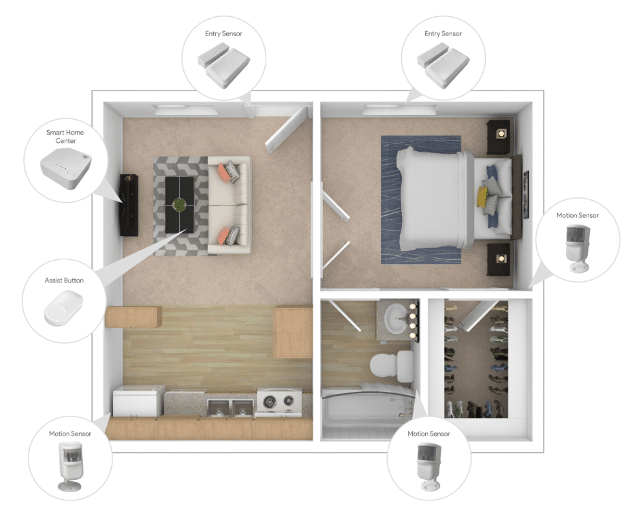
Monitors the home 24/7 including fall detection, failure to return, sleep monitoring, and more.
When problems arise, Amelia Home Care Family communicates outward in a tiered escalation methodology as urgency increases. This approach gives family and professional caregivers an opportunity to get involved and deescalate issues before dispatching Emergency Services.

Get alerted and know what’s happening.
Get involved right away to help resolve the issue.
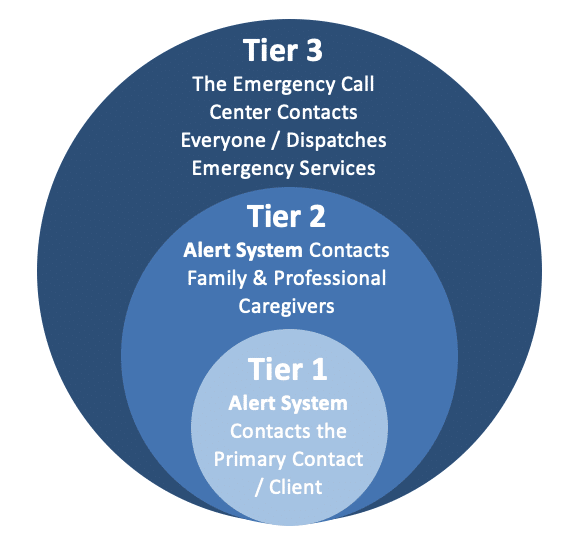
Group SMS Notifications, In-App Push Notifications,
24/7 Call Center, & Emergency Services
Features for Every Lifestyle
Captures and describes lifestyle patterns into the app
- Check-in remotely, review the Daily Report, and know where people were last seen.
- Detects when people are home, away, or sleeping.
- Record access to medication with a variety of medication activity sensors.
Measures sleep quality with an activity sensor in the bedroom. - Track trips to the bathroom, showers, and bathroom falls with a bathroom motion sensor.
- Identifies meal activities with access to the microwave, coffee, and fridge.
Alerts when problems are detected
- Fall detection without a button: alerts on unexpected inactivity in the home.
- Medical alert button to call for emergency help or simply request assistance.
- Alert if occupants do not get up in the morning.
- Notify if occupants did not make it to the bedroom at night.
- Detect if the stove is left on, unattended.
- Delivers reminders if people forgot to take medication.
- Mold and mildew detection with added humidity sensors.
- Integrates fall and SOS alerts from Apple Watch and Samsung Galaxy Watch.
- Uses text messages for alerts, so family participants don’t have to download an app.
Proven to help fight senior depression, loneliness, and isolation
- Coordinates and assigns a new family member to reach out each day, with suggestions on what to talk about from the last person.
- Smart Speaker support to control the home, play music, and connect family.
Adds needed support for Dementia and Alzheimer’s
- Alerts when perimeter doors open to detect wandering.
- Predicts when occupants should arrive back home, and alerts if they’re not.
- Pings your phone if someone is caught roaming around the house at night.
- Water leak detection for the bathroom and toilet.
Expandable
- Apple Watch and Samsung Galaxy Watch keep track of falls.
- Amazon Alexa and Google Home integrate to control with your voice.
- Smart Locks secure the home and provide access to the Trusted Circle.
- Smart Bulbs and Plugs to control lighting and appliances with your voice.
- Connected Thermostats integrate to control comfort and save energy.
- Security system enabled with a siren and keypad helps seniors feel in control.
About Yonkers
Yonkers is a city on the Hudson River, in Westchester County, New York. Green spaces include Untermyer Park and Gardens, with its formal Walled Garden, water features and river views. The Hudson River Museum has American art, an 1876 mansion and a planetarium. Presidential portraits are displayed at Philipse Manor Hall State Historic Site, a Georgian house. Empire City Casino and Raceway hosts horse races. ― Google
Yonkers (/ˈjɒŋkərz/[5]) is a city in Westchester County, New York, United States. Developed along the Hudson River, it is the fourth most populous city in the state of New York, after New York City, Buffalo, and Rochester. The population of Yonkers was 195,976 as enumerated in the 2010 United States Census; it is estimated to have increased by 2.2% to 200,370 in 2019.[2] It is classified as an inner suburb of New York City, located directly to the north of the Bronx and approximately two miles (3 km) north of the northernmost point in Manhattan.
Yonkers’s downtown is centered on a plaza known as Getty Square, where the municipal government is located. The downtown area also houses significant local businesses and nonprofits. It serves as a major retail hub for Yonkers and the northwest Bronx.
The city is home to several attractions, including access to the Hudson River, Tibbetts Brook Park, with its public pool with slides and lazy river and two-mile walking loop Untermyer Park; Hudson River Museum; Saw Mill River daylighting, wherein a parking lot was removed to uncover the Nepperkamack (Saw Mill River); Science Barge; and Sherwood House. Yonkers Raceway, a harness racing track, renovated its grounds and clubhouse, and added legalized video slot machine gambling in 2006 to become a “racino” named Empire City. This casino-style gambling added to the attraction of the track as a destination.
Major shopping areas are located in Getty Square, on South Broadway, at the Cross County Shopping Center and Westchester’s Ridge Hill, and along Central Park Avenue, informally called “Central Ave” by area residents, a name it takes officially a few miles north in White Plains.
Yonkers is known as the “City of Seven Hills“, which includes Park, Nodine, Ridge, Cross, Locust, Glen, and Church hills.
20th century

Bakelite, the first completely synthetic plastic, was invented circa 1906 in Yonkers by Leo Baekeland, and manufactured there until the late 1920s. Today, two of the former Alexander Smith and Sons Carpet Company loft buildings located at 540 and 578 Nepperhan Avenue have been repurposed to house the YoHo Artist Community. This collective group of artists works out of private studios there.[13]
During World War I, a total of 6,909 Yonkers residents entered military service. This was approximately seven percent of the population.[14]:vi Most Yonkers men joined either the 27th Division or the 77th Division.[14]:6 In total, 137 Yonkers residents were killed during the war.[14]:77 Among the survivors of the USS President Lincoln, a Navy transport ship sunk during the war, were seventeen sailors from Yonkers.[14]:15
Civilians helped in the war effort by joining organizations such as the American Red Cross. In 1916, there were 126 people in the Yonkers chapter of the Red Cross. By the end of the war, 15,358 Yonkers residents were members of the chapter. Mostly women, they prepared surgical dressings, created hospital garments for the wounded, and knit articles of clothing for refugees and soldiers. Besides joining the Red Cross, residents of Yonkers donated to various war drives. The total amount raised for these drives was $19,255,255.[14]:23–24
Early in the 20th century, Yonkers also hosted a brass era automobile maker, Colt Runabout Company.[15] Although the vehicle reportedly performed well, the company went under. Yonkers was the headquarters of the Waring Hat Company, at the time the nation’s largest hat manufacturer. During World War II, the city’s factories were converted to produce items for the war effort, such as tents and blankets by the Alexander Smith and Sons Carpet Factory, and tanks by the Otis Elevator factory. After World War II, however, increased competition from less expensive imports resulted in a decline in manufacturing in Yonkers, and numerous industrial jobs were lost. The Alexander Smith Carpet Company, one of the city’s largest employers, ceased operation during a labor dispute in June 1954.
In 1983, the Otis Elevator Factory finally closed its doors. With the loss of such jobs, Yonkers became primarily a residential city. Some neighborhoods, such as Crestwood and Park Hill, became popular with wealthy New Yorkers who wished to live outside Manhattan without giving up urban conveniences. Yonkers’s excellent transportation infrastructure, including three commuter railroad lines (now two: the Harlem and Hudson Lines), and five parkways and thruways, made it a desirable city in which to live. It is a 15-minute drive from Manhattan and has numerous prewar homes and apartment buildings. Yonkers’s manufacturing sector has also shown a resurgence in the early 21st century.
On January 4, 1940, Yonkers resident Edwin Howard Armstrong transmitted the first FM radio broadcast (on station W2XCR) from the Yonkers home of C.R. Runyon, a co-experimenter. Yonkers had the longest running pirate radio station, owned by Allan Weiner, which operated during the 1970s through the 1980s.
In 1942, a short subway connection was planned between Getty Square and the IRT Broadway–Seventh Avenue Line, which terminates in Riverdale at 242nd Street slightly south of the city line. The plan was dropped.[16][17]
In 1960, the Census Bureau reported Yonkers’s population as 95.8% white and 4.0% black.[18] The city’s struggles with racial discrimination and segregation were highlighted in a decades-long federal lawsuit. After a 1985 decision and an unsuccessful appeal, Yonkers’s schools were integrated in 1988. Federal judge Leonard B. Sand ruled that Yonkers had engaged in institutional segregation in housing and school policies for over 40 years. He tied the illegal concentration of public housing and private housing discrimination to the city’s resistance to ending racial isolation in its public schools.[citation needed]
In the 1980s and 1990s, Yonkers developed a national reputation for racial tension, based on a long-term battle between the city and the NAACP over the building of subsidized low-income housing projects in the city. The city planned to use federal funding for urban renewal efforts within Downtown Yonkers exclusively; other groups, led by the NAACP, believed that the resulting concentration of low-income housing in traditionally poor neighborhoods would perpetuate poverty. Although the City of Yonkers had been warned in 1971 by the United States Department of Housing and Urban Development against further building of low-income housing in west Yonkers, it continued to support subsidized housing in this area between 1972 and 1977.[19]
Yonkers gained national/international attention during the summer of 1988, when it reneged on its previous agreement to build promised municipal public housing in the eastern portions of the city, an agreement it had made in a consent decree after losing an appeal in 1987. After its reversal, the city was found in contempt of the federal courts. Judge Sand imposed a fine on Yonkers which started at $100 and doubled every day, capped at $1 million per day by an appeals court,[20] until the city capitulated to the federally mandated plan.
Yonkers remained in contempt of court until September 9, 1988. The City Council relented in the wake of having to close the library and cutback on sanitation measures because of paying the fines. It also was considering having to make massive city layoffs which would have adversely affected its ability to provide services to the upper classes it was trying to retain. First-term mayor Nicholas C. Wasicsko fought to save the city from financial disaster and bring about unity. Yonkers’s youngest mayor (elected at age 28), Wasicsko struggled in city politics. It was scarred with the stigma of the “Balkanization of Yonkers”. He succeeded in helping to end the city’s contempt of the courts, but was voted out of office as a result. His story is the subject of a miniseries called Show Me a Hero, which aired on HBO in 2015. It was adapted from the 1999 nonfiction book of the same name by former New York Times writer, Lisa Belkin.{{[21]|date=November 2017}}
A Kawasaki railroad cars assembly plant opened in 1986 in the former Otis plant. It produces the new R142A, R143, R160B, and R188 cars for the New York City Subway, and the PA4 and PA5 series for PATH.
Though Yonkers contains many small residential enclaves and communities, it can conveniently be divided into four quarters, demarcated by the Saw Mill River. There are 37 or more distinct neighborhoods, though many of these names are rarely used today except by older residents and real-estate brokers.
Northeast Yonkers
Northeast Yonkers is a primarily Irish-American and Italian-American area. House sizes vary widely, from small houses set close together, to larger homes in areas like Lawrence Park West and mid-rise apartment buildings along Central Avenue (NY 100). Central Avenue (officially named Central Park Avenue) provides an abundance of shopping for Yonkers residents. Shopping centers along Central Avenue include stores such as Best Buy, Burlington Coat Factory, Kohl’s, Bob’s Furniture and Barnes & Noble, as well as many other stores and restaurants. Notable former residents include Steven Tyler (born Steven Tallarico) of the rock band Aerosmith, whose childhood home was located at 100 Pembrook Drive.[30]
Northeast Yonkers contains the upscale neighborhoods of Crestwood, Colonial Heights, and Cedar Knolls, as well as the wealthy enclaves of Beech Hill and Lawrence Park West. It also contains a gated community off the eastern edge of the Grassy Sprain Reservoir known as Winchester Villages. Landmarks include St Vladimir’s Seminary, as well as Sarah Lawrence College, and the Tanglewood Shopping Center (one-time home of The Tanglewood Boys gang). Northeast Yonkers is somewhat more expensive than the rest of the city, and due to the proximity of several Metro-North commuter railroad stations, its residents tend to be employed in corporate positions in Manhattan.
The “Blue Cube”, a former factory turned television production facility on the Northwest Yonkers waterfront, as seen from across the Hudson River
Riverdale Avenue looking north from the Bronx line
Northwest Yonkers
Northwest Yonkers is a collection of widely varying neighborhoods, spanning from the Hudson River to around the New York State Thruway/I-87 and from Ashburton Avenue north to the Hastings-on-Hudson border. With the Hudson River bordering it to the west, this area has many Victorian-era homes with panoramic views of the Palisades. An interest in historic preservation has taken hold in this area in recent years,[when?] as demonstrated on streets like Shonnard Terrace, Delavan Terrace, and Hudson Terrace.
Neighborhoods include Nepera Park, Runyon Heights, Homefield, Glenwood, and Greystone. Landmarks include the Hudson River Museum, the Lenoir Nature Preserve, and the nationally recognized Untermyer Park and Gardens. In fact, Untermyer Park and Gardens is not only Yonkers hidden gem but is the number one attraction in Westchester County. The significant amount of surviving Victorian architecture and number of 19th-century estates in northwest Yonkers has attracted many filmmakers in recent years.
The two block section of Palisade Avenue between Chase and Roberts Avenues in northwest Yonkers is colloquially known as “the north end” or “the end”. It was and still is the only retail area in northwest Yonkers, and was well known for its soda fountain, Urich’s Stationery, and Robbins Pharmacy. It was once the end of the #2 trolley line, which has since been replaced by a Bee-line Bus route. One part of Yonkers that is sometimes overlooked is Nepera Park. This is a small neighborhood at the northern part of Nepperhan Avenue on the Hastings-on-Hudson border. Nepperhan Avenue in Nepera Park is also a major shopping district for the area.
Southeast Yonkers
Southeast Yonkers is mostly Irish-American (many of the Irish being native born) and Italian-American. Many of the businesses and type of architecture in southeast Yonkers bear a greater resemblance to certain parts of the Bronx, Brooklyn, Queens, or Staten Island than to points north. Southeastern Yonkers is largely within walking distance of the Woodlawn and Wakefield sections of the Bronx. Many residents regard eastern McLean Avenue, home to a vibrant Irish community shared with Woodlawn, to be the true hub of Yonkers.[citation needed]
Similarly, a portion of Midland Avenue in the Dunwoodie section has been called the “Little Italy” of Yonkers. Landmarks of southeastern Yonkers include the Cross County Shopping Center, Yonkers Raceway, and St. Joseph’s Seminary in the Dunwoodie neighborhood, which was visited by Pope John Paul II in October 1995 and later by Pope Benedict XVI in April 2008.[citation needed]
Southwest Yonkers
Getty Square is Yonkers’s downtown and the civic center and central business district of the city. Much of southwest Yonkers grew densely along the multiple railroads and trolley (now bus) lines along South Broadway and in Getty Square, connecting to New York City. Clusters of apartment buildings surrounded the stations of the Yonkers branch of the New York and Putnam Railroad and the Third Avenue Railway trolley lines and these buildings still remain although now served by the Bee-Line Bus System. The railroad companies themselves built neighborhoods of mixed housing types ranging from apartment buildings to large mansions in areas like Park Hill wherein the railroad also built a funicular to connect it with the train station in the valley. This traditionally African-American and white area has seen a tremendous influx of immigrants from Mexico, Central America, the Caribbean, South Asia, and the Middle East. Off South Broadway and Yonkers Avenue one can find residential neighborhoods, such as Lowerre, Nodine Hill, Park Hill, and Hudson Park (off the Hudson River) with a mix of building styles ranging from dense clusters of apartment buildings, blocks of retail with apartments above, multifamily row houses, and detached single-family homes.[31]
Other neighborhoods of these types, although with a larger number of detached houses, are Ludlow Park, Hudson Park, and Van Cortlandt Crest, off Riverdale Avenue next to the border with Riverdale.
The area is also home to significant historical and educational institutions including the historic Philipse Manor Hall (a New York State Historic Site that houses one of three papier-mache ceilings in the United States), The Science Barge, Beczak Environmental Education Center, and a 2003 Yonkers Public Library.[32]
Many residents are of African, Caribbean, Italian, Polish or Mexican descent while an influx those from other cultural backgrounds has continued to shape a culturally diverse community. Some neighborhoods right on the Riverdale border are increasingly becoming home to Orthodox Jews. The revitalization of the Getty Square area has helped to nurture growth for Southwest Yonkers.
In the early 2000s several new luxury apartment buildings were built along the Hudson. There is also a new “Sculpture Meadow on the Hudson”, renovation of a Victorian-era pier, and a new public library housed in the remodeled Otis elevator factory. Peter Kelly‘s award-winning fine dining restaurant X20 – Xaviars on Hudson is located at the renovated pier with much success.[33][34] In 2020 several more new rental buildings were placed at the river’s edge on Alexander Street. Sawyer’s place is a 18-story building that sits atop the site of the original old mill. There are new proposals along with the current projects which are intended to revitalize downtown Yonkers.
In Yonkers and throughout America the number of family caregivers is growing. The day-to-day responsibilities of caring for an older person can be stressful and time consuming. New legislation addresses the growing need to provide services to assist caregivers. The federal government recognizes the fact that caregivers need help and we are here to offer that help.
Caregiver Services
- Information about existing resources
- Assistance in securing services and training
- Nutrition Services
- Home-delivered Meals
- Transportation to and from medical appointments and shopping
- Counseling
- Respite care opportunities
- Support Group Directory and Info
- Homemaker and Home Health Aides
- Housing Assistance
- Companionship Services
Additional Caregiver Resources
Alzheimer’s Association
1-800-272-3900
American Heart Association
914-694-6464
American Red Cross
914-946-6500
National Family Caregivers Assoc.
800-896-3650
National Family Caregiver Support Program
NYS Office for Aging Senior Citizen’s Hot Line
800-342-9871
Visiting Nurse Association of America
800-426-2547
Westchester County Department for Senior Programs and Services
914-813-6400
Mental Health Services Locator – New York
800-789-2647
The U.S. Administration on Aging
202-619-0724
The AGS Foundation for Health in Aging
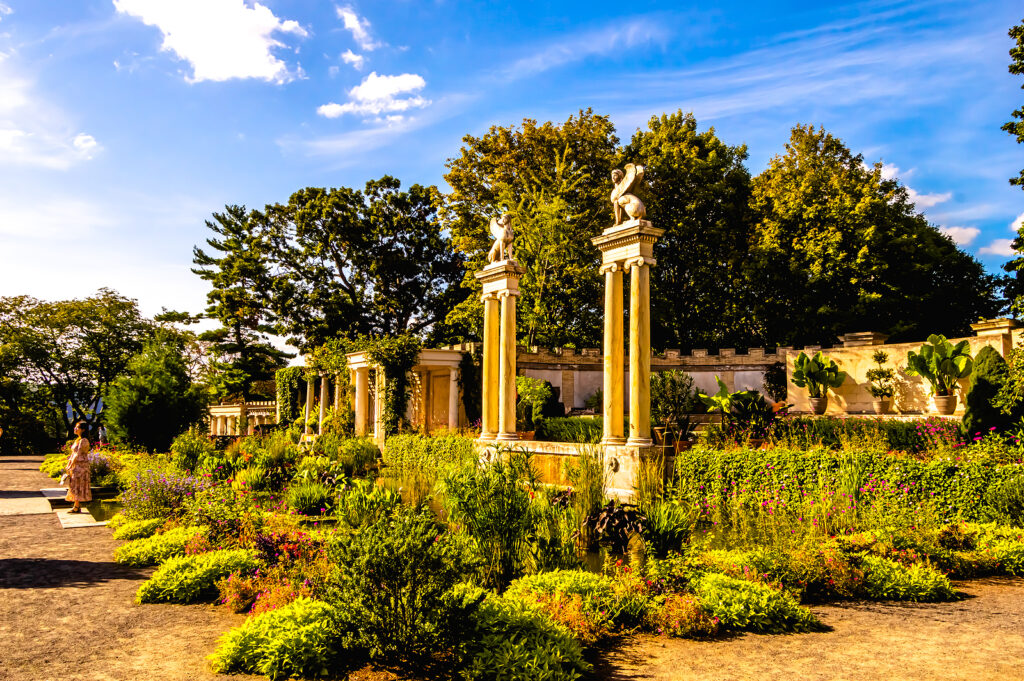
Map of Yonkers
Map of Directions from Yonkers to Amelia Home Care
Driving Direction from Yonkers to Amelia Home Care
Yonkers, New York
Get on Saw Mill Pkwy S/Saw Mill River Pkwy S from Nepperhan Ave and Yonkers Ave
6 min (1.8 mi)
Head southwest toward Prospect St
210 ft
Turn right toward Prospect St
433 ft
Turn right onto Prospect St
157 ft
Continue onto Nepperhan Ave
0.5 mi
Use the right 2 lanes to turn slightly right onto Yonkers Ave
0.7 mi
Slight right onto the ramp to Saw Mill Pkwy
0.1 mi
Continue onto Rumsey Rd
443 ft
Slight right toward Rumsey Rd
0.1 mi
Use the left lane to turn left at the 1st cross street onto Rumsey Rd
0.1 mi
Keep left at the fork, follow signs for Cross County Pkwy/Saw Mill Pkwy and merge onto Saw Mill Pkwy S/Saw Mill River Pkwy S
0.1 mi
Take I-87 S, I-278 W and Belt Pkwy/Leif Ericson Dr/Shore Pkwy to Brighton 6th St in Brooklyn, New York. Take exit 8 from Belt Pkwy/Leif Ericson Dr/Shore Pkwy
49 min (34.8 mi)
Merge onto Saw Mill Pkwy S/Saw Mill River Pkwy S
2.1 mi
Keep left at the fork to continue on Mosholu Pkwy, follow signs for I-87 S/Deegan Expwy
0.9 mi
Take the I-87 S/Deegan Expwy exit toward Triboro Br
0.4 mi
Merge onto I-87 S
6.7 mi
Use the right 2 lanes to take the I-278 W/Triboro Br exit toward Manhattan/Queens
Toll road
0.3 mi
Merge onto I-278 W
Toll road
3.1 mi
Take the I-278 S exit
0.4 mi
Continue onto I-278 W
3.0 mi
Keep left to stay on I-278 W
2.4 mi
Keep right to stay on I-278 W
5.6 mi
Keep right to stay on I-278 W
1.6 mi
Keep left at the fork to continue on Belt Pkwy/Leif Ericson Dr/Shore Pkwy, follow signs for Queens
8.2 mi
Take exit 8 toward Coney Is Ave
269 ft
Continue on Brighton 6th St. Take Ocean View Ave to Ocean Parkway Service Rd
7 min (0.9 mi)
Turn right onto Brighton 6th St
0.3 mi
Turn right onto Ocean View Ave
0.2 mi
Turn left onto Brighton 2nd St
0.1 mi
Turn right onto Brighton Beach Ave
0.2 mi
Turn right onto Ocean Parkway Service Rd
Destination wil
Amelia Homecare, Inc
3007 Ocean Pkwy 1ST FLOOR, Brooklyn, NY 11235


